
Photo essay: What these artists and activists want you to know about their L.A.
This story is part of L.A. — We. See. You!, the second issue of Image, which explores various ways of seeing the city for what it is. See the full package here.
They were ’hood trading cards. They announced that you were newly single. They announced that you were newly together. They showed off the new haircut, the fresh fit. They mandated that you practice your poses in the mirror. They gave you a reason to coordinate looks and flex with your crew. They cemented a new friendship. They were your Friday night in ’98, your Saturday in ’01. They were the reason you went to the mall. They were your first family portrait. They gauged your popularity. They filled the plastic cardholders in the binder you got at the swap meet. They were the original Instagram. They were small but everything. As soon as you held one, flipped it over, saw the KIT, plus the number, you knew the deal.
Star Shots were currency to so many. “It was our version of social media,” poet and author Yesika Salgado says. Makeup artist Selena Ruiz took her first Star Shot when she was 5 at Tyler Mall in her hometown of Riverside with her mom and sister. “Star Shots were just a norm,” she says. Tom’s One Hour Photo in Koreatown is still a mecca for Star Shots in Los Angeles. Walking into the small studio on Beverly Boulevard feels like walking into 1999, when the ritual of choosing an airbrushed backdrop was the biggest decision you’d make that weekend.
Tom Tuong and his wife, Lisa Le, are masters of the form. They’re internationally known, thanks to a visit from country singer Kacey Musgraves in 2019, but their brilliance hits different in L.A. They are keeping alive a tradition of portraiture that feeds on the energy of IRL. Recently, that’s spilled over to online spaces, where artists and archivists like Map Pointz and Veteranas and Rucas’ Guadalupe Rosales collect, catalog and share Star Shots, reimagining their place in the Instagram age.
For the second installment of Image, we asked artists, activists and creatives to put their own contemporary spins on a visual form that has kept so many connected in this city of sprawl. They came, they posed, they remembered.
Ruth Mora, illustrator and comic artist
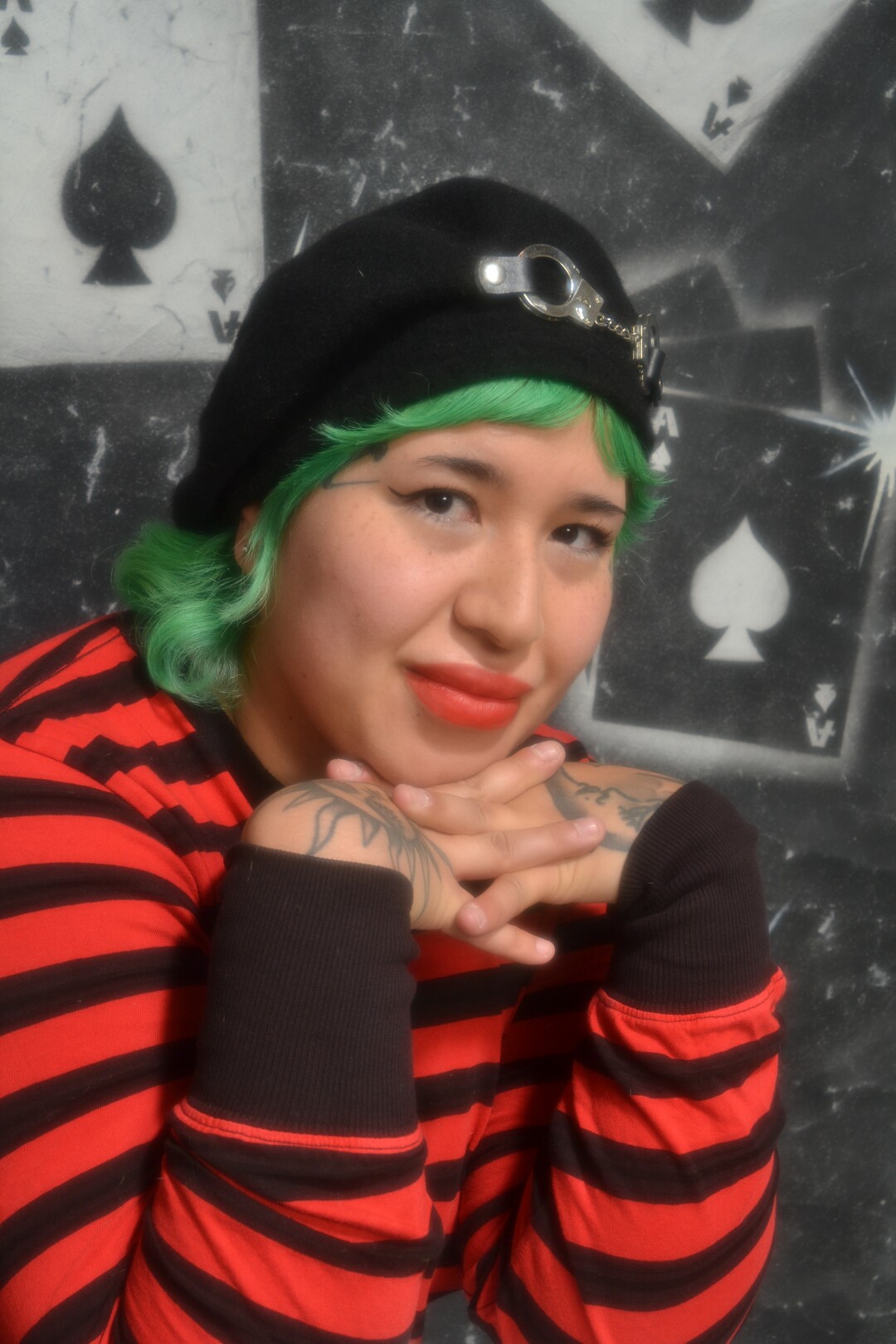
“L.A. is awesome,” says artist Ruth Mora. “I don’t care what anyone says.”
(Tom Tuong of Tom’s One Hour Photo / For The Times)
What do you want people to know about your L.A.? L.A. is awesome, I don’t care what anyone says. If you’re born and raised here, you know exactly what I mean. There’s definitely different senses of community in different areas that you go to. One of my favorite things about L.A. is all the different sign painting and sign graphics, even just the liquor store signs. All the color and lettering around L.A., specifically in the ’hoods, I love it.
What does your L.A. of the future look like? Smaller subculture groups [continuing] to work together to do cool, artistic things for the community.

Brittany Chavez is the founder of Shop Latinx, an online marketplace by and for Latinas. Her hope for L.A.: “that everyone in Boyle Heights can live long, beautiful lives.” Chavez is photographed with her dog, Pawla.
(Tom Tuong of Tom’s One Hour Photo / For The Times)
What do you want people to know about your L.A.? The borough I live in, Boyle Heights, is home to hardworking and loving Latinx. They take pride in their homes, their cars, their plants, their parties, their food and their families. There are so many characters that live on my block, and every morning that I wake up and walk my dog Pawla, we’re greeted with the smell of fresh pan dulce, the sounds of birds chirping and cars headed to work, and a “Buenos dias, mija“ from the elders in my neighborhood.
What does your L.A. of the future look like? Well, I hope my block never changes, that’s for sure. And I hope that everyone in Boyle Heights can live long, beautiful lives without the fear of them ever losing their homes or communities. The future of L.A. looks like intergenerational appreciation for the diverse cultures that are found throughout this city and a child-like curiosity to explore all the magic and nostalgia it has to offer.
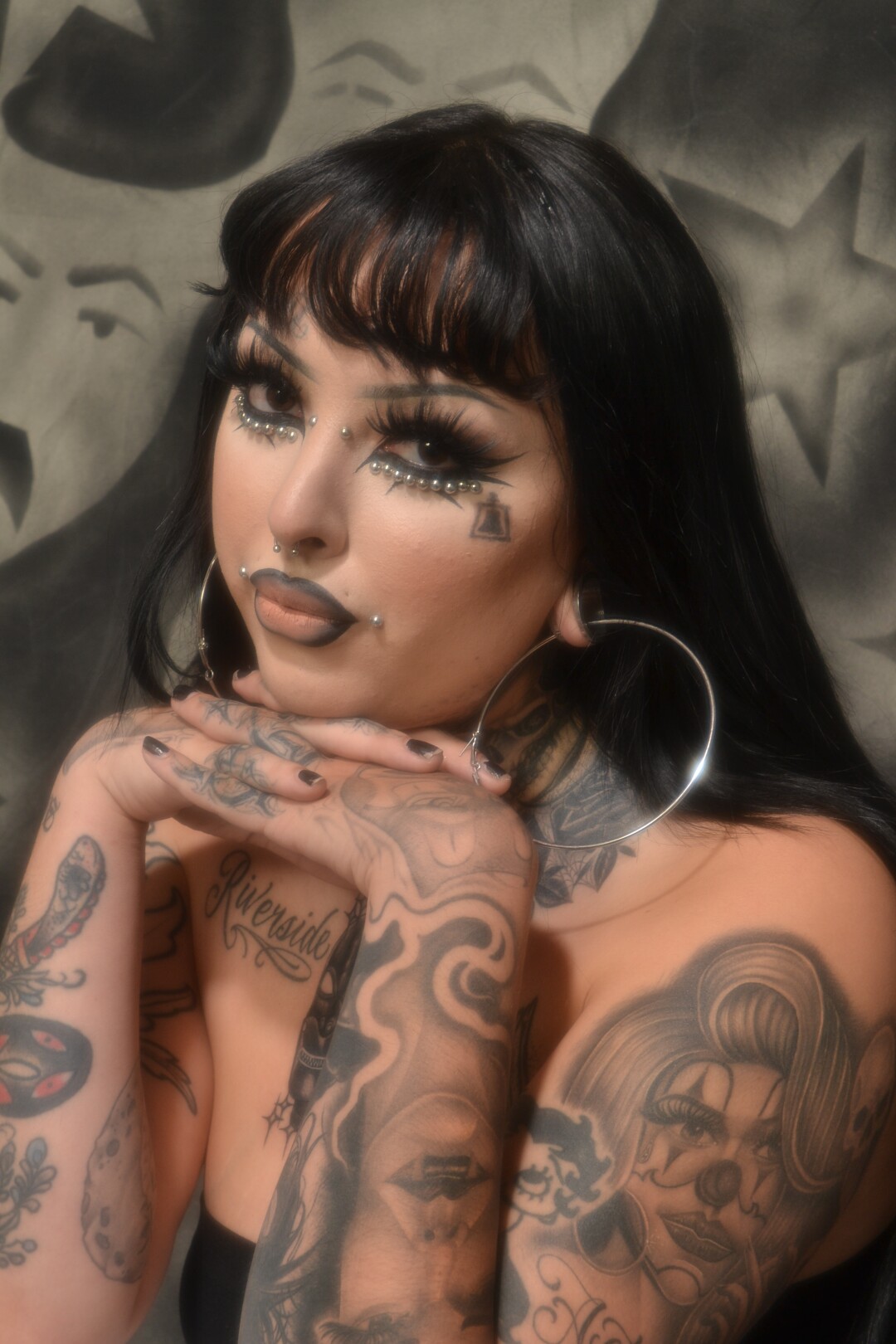
Selena Ruiz is a makeup artist who lives in L.A., a place she says is more than just Hollywood.
(Tom Tuong of Tom’s One Hour Photo / For The Times)
What do you want people to know about your L.A.? It’s not Hollywood. Real L.A. is like, South L.A., East L.A., West L.A. It’s not all glamorous, it’s actually really hard out here.
What does your L.A. of the future look like? I just hope that all of the creatives who are on the bottom get the representation they deserve. We’ve been going hardest in the pandemic because we have nothing else, you know? We’re trying to push our craft. I just hope we can finally reclaim what’s been taken by white creatives.
Kazi, musician, animator, Claymation artist

Kazi is an animator, Claymation artist and musician from the Crenshaw District. He sees a creative renaissance in the city’s future, “basically a Black utopia.”
(Tom Tuong of Tom’s One Hour Photo / For The Times)
What do you want people to know about your L.A.? You have what L.A. is portrayed in media. My L.A. is the flipside of that. It’s like if you were in the forest, and you flip over a log and there’s a bunch of bugs under there. I feel like I’m part of the teeming underlife in L.A.
What does your L.A. of the future look like? I always refer to it as a renaissance, what’s going on right now in our communities. In the future, it will be fully realized and it will be basically a Black utopia.
Astrid Cota, activist; and Ricci Sergienko, organizer

Activist Astrid Cota photographed with their friend Ricci Sergienko, an organizer. “My L.A. is for everybody,” says Cota.
(Tom Tuong of Tom’s One Hour Photo / For The Times)
What do you want people to know about your L.A.? My L.A. is for everybody. We all belong here whether we were born here or not — it’s for us. By the people, for the people. However, gentrifier energy is never welcome. The land must be respected and nurtured.
What does your L.A. of the future look like? My L.A. of the future looks like a safe place where everyone can be their true selves, without fear or shame. A place where people can come together peacefully or wildly if they want to. Where motivation and love is always in the air.
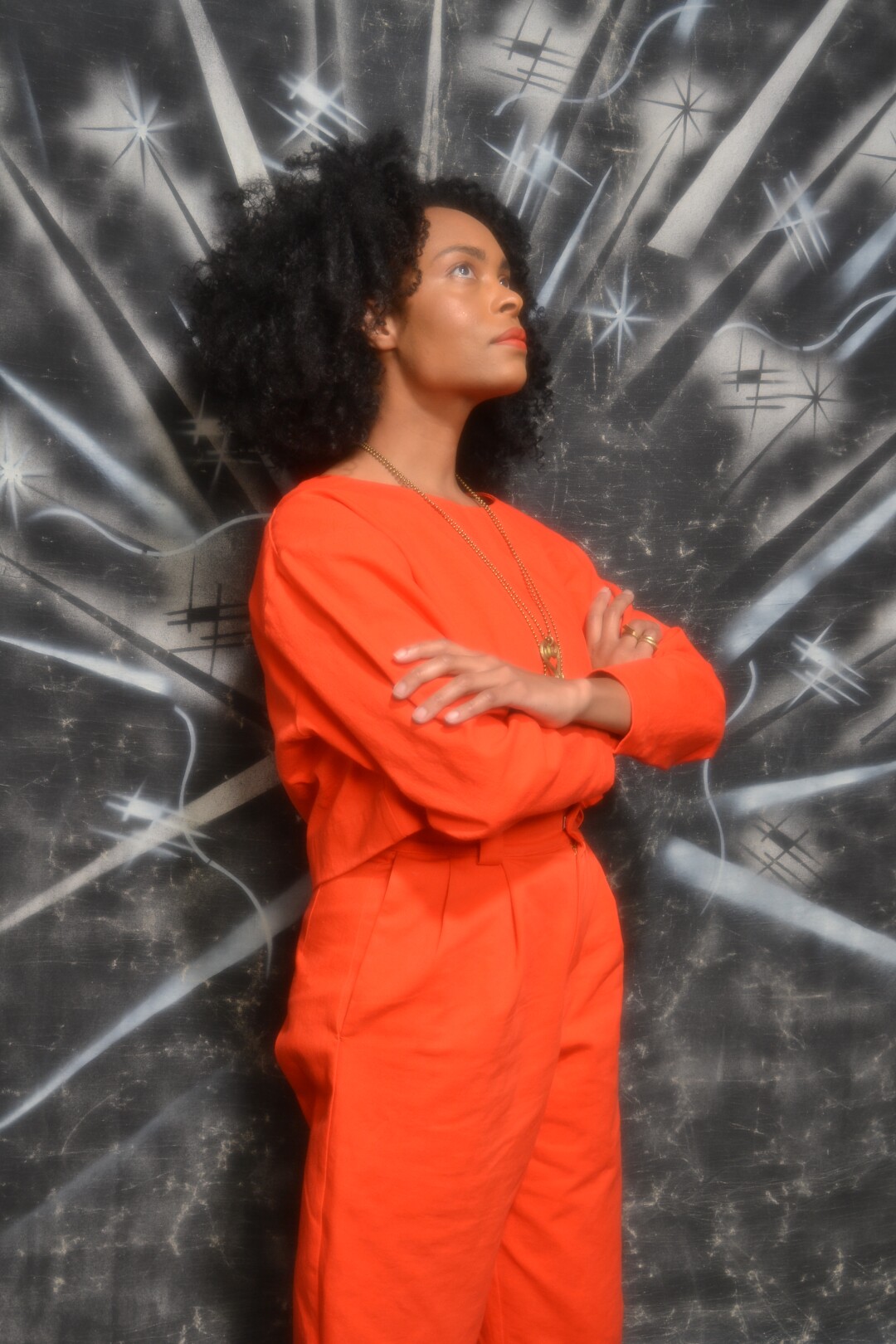
Artist Kenturah Davis wants to see “more thriving Black- and brown-owned buildings/businesses” in L.A.’s future.
(Tom Tuong of Tom’s One Hour Photo / For The Times)
What do you want people to know about your L.A.? My L.A. is a chill vibe (except in traffic). The multiplicity of creative connection points in visual art, music, food and film readily feeds the soul.
What does your L.A. of the future look like? Did I mention the traffic? That can go. Time-warp us back to a future when you can get from the Eastside to the beach in 25 minutes. A more realistic expectation I have for the future is to see even more thriving Black- and brown-owned buildings/businesses, in whatever neighborhoods we want to be in.
Jacqui Whang, educator and well-being curator
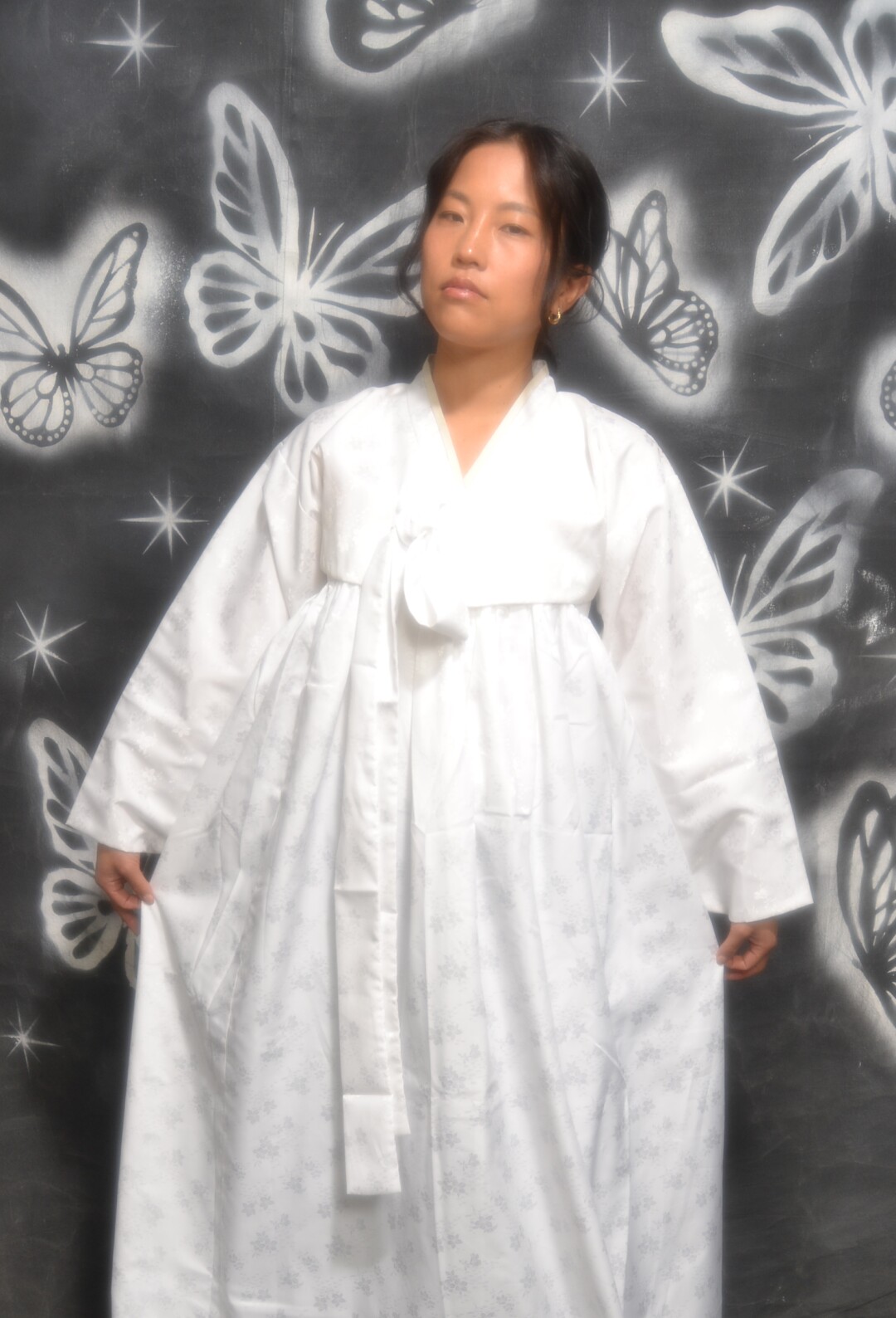
In the last year, educator and well-being curator Jacqui Whang has grieved anti-Asian hate and racism toward Black and brown communities. For the shoot, she wore a white hanbok to represent “the death to my old self and the new space of healing.”
(Tom Tuong of Tom’s One Hour Photo / For The Times)
What do you want people to know about your L.A.? To be honest, I don’t see this city as “my” L.A. but more like ours. L.A. is such a dynamic city comprised of people from all different walks of life, and what brings us together is the shared experience of being a part of the legacy of Los Angeles. I grew up in the outskirts of Los Angeles, and as a non-native, I am here to listen and share in the stories that are the backbone of L.A. culture and community. It can be easy to get caught up in our own singular experience, but the city reminds me that we are all here together. Especially as a Korean American, I have felt that this city symbolizes so much for my family and friends. It is a gathering space where many of us immigrant families began and has become a home away from home.
What does your L.A. of the future look like? I’m looking forward to a season of well-being for my personal self and wish that upon others as well. I hope that we all take care of ourselves and be present in our lives, appreciating every moment, person and experience.
This has been a challenging past few months, with not only an ongoing pandemic but the rising of anti-Asian hate and violence, the deaths within our Black and brown communities from the police, and the exposure of our systems of inequities. Even though there has been so much to grieve from our experiences of racism and hate, the movement to pause and restore our collective healing has been overwhelmingly inspiring. I will always remember during our city closure, the sky became clear and the radiance from the clouds was surreal. This moment was so deep and spoke to me. It showed me the power of pausing and the peace that it brings to the chaos by simply being present.
We have everything we need to grow into our future, one breath at a time. I am working on being more present in the process so that I can be aware of who I am and not lose self-connection and intimacy as we journey together in navigating our impact on our local to global ecosystems. In this photo shoot, I chose to wear a white hanbok because I wanted to represent the death to my old self and the new space of healing and empathy that I want to live each day.
Morgan Parker, poet, essayist and novelist
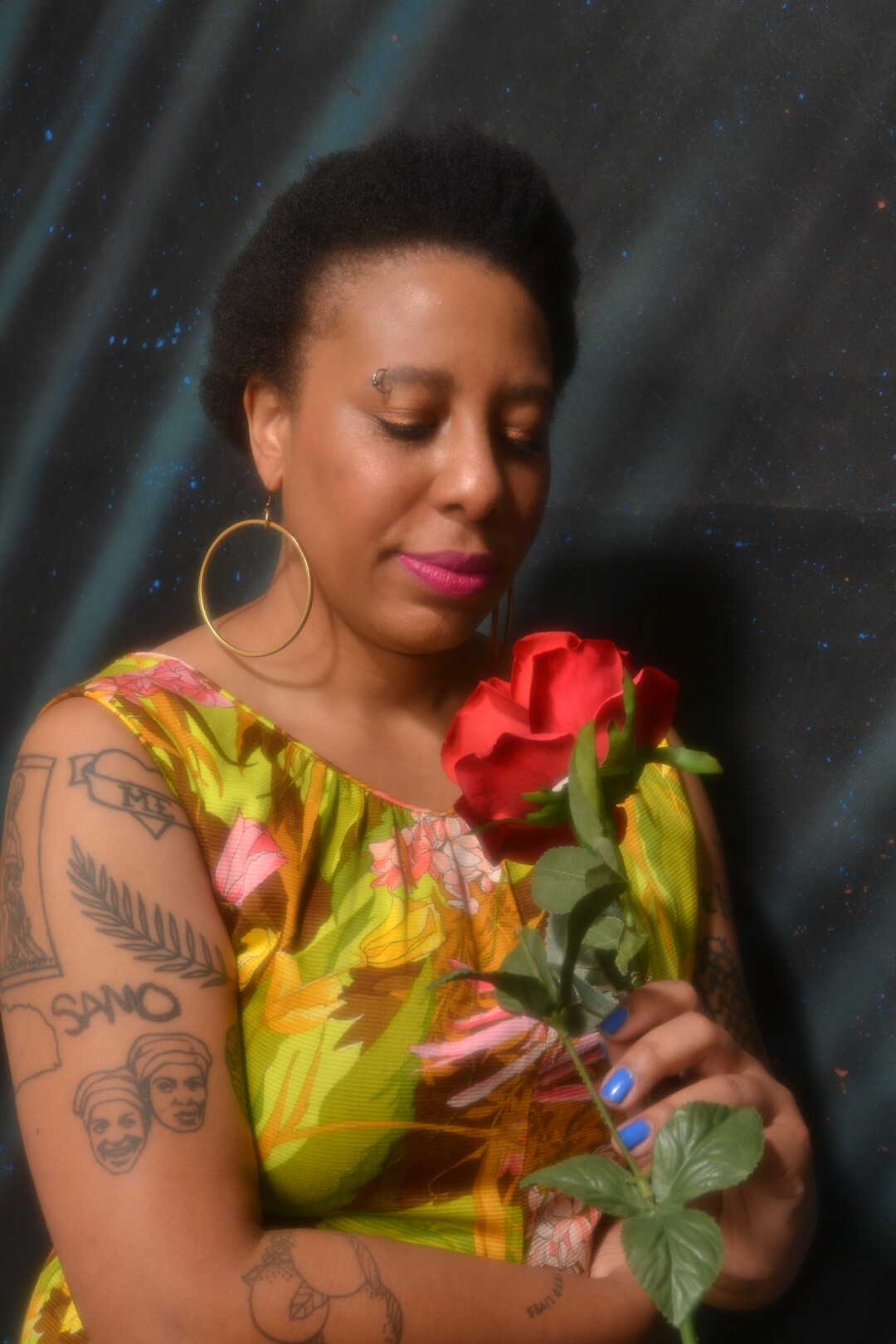
Writer Morgan Parker’s L.A. will surprise you.
(Tom Tuong of Tom’s One Hour Photo / For The Times)
What do you want people to know about your L.A.? It will surprise you if you let it.
What does your L.A. of the future look like? Less borders between industries, neighborhoods, realities. More community fridges, more arts in schools, more mutual concern.
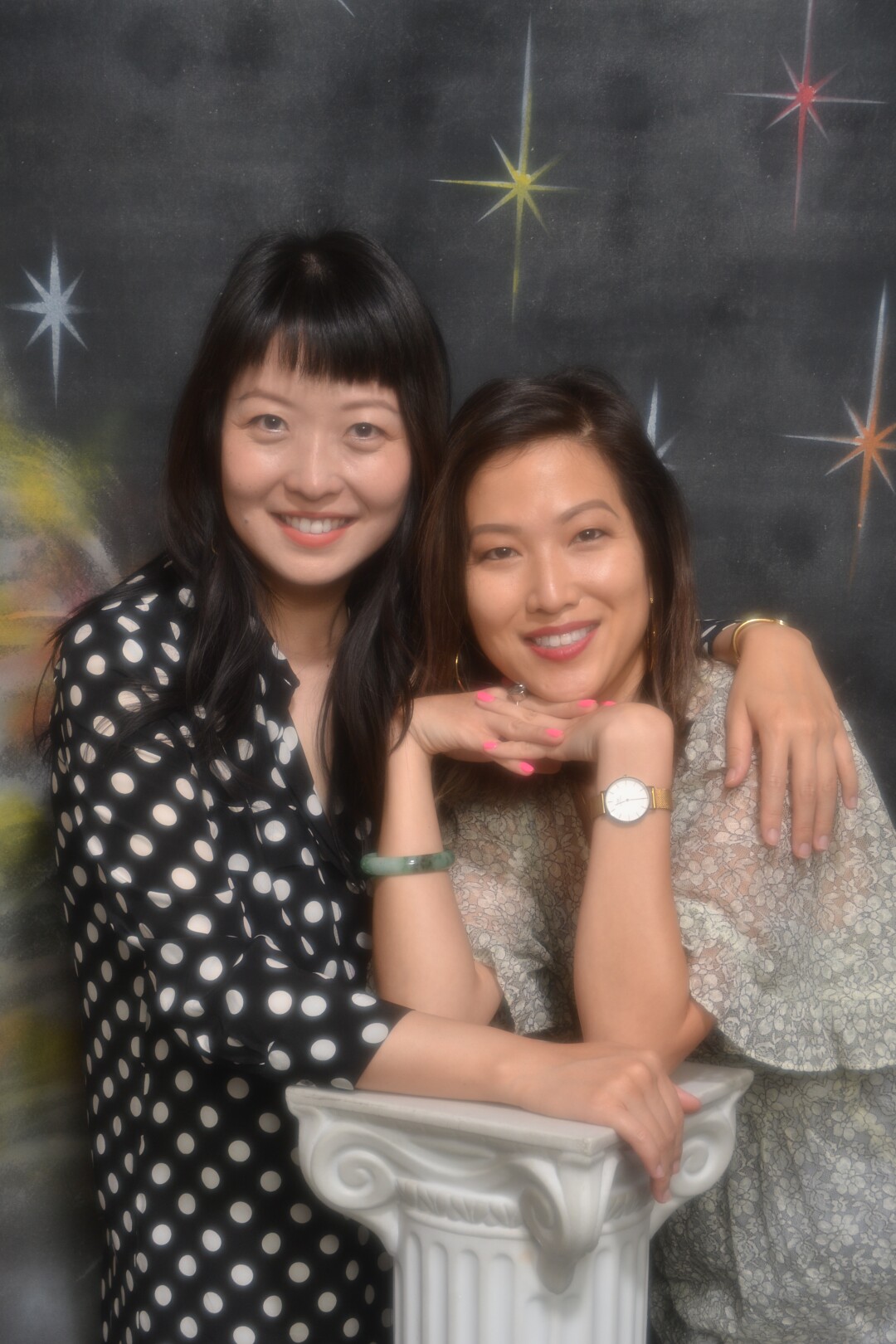
Xuan Juliana Wang (left) is the author of “Home Remedies.” She poses with her friend, Jean Chen Ho, author of the forthcoming book, “Fiona and Jane.”
(Tom Tuong of Tom’s One Hour Photo / For The Times)
What do you want people to know about your L.A.? My L.A. is very Asian American, not just in a racial/ethnic census demographic descriptor kind of way, but calling forth the spirit of how the term “Asian American” was created out of political coalition-building in the late 1960s by two student organizers at UC Berkeley, Emma Gee and Yuji Ichioka. … L.A. as a city is often dismissed as a place “without history,” but of course we know that’s not true. I think it’s that our city is so abundant, so expansive. We have too many stories here, many beautiful contradictions, that a traditional linear history cannot hold. — Jean Chen Ho
What does your L.A. of the future look like? This is Tongva and Chumash land, before the missions. Let’s start there. Let’s imagine a radical future for our city — to be radical means to return to the roots — that honors that Indigenous story. Coming out of the pandemic, we’re craving a sense of community with people we normally wouldn’t have a chance to connect with, but I think we can do that in our own neighborhoods and get to know the very distinctly local phenomena that have a material difference on our lives and the lives of people who live next to us. — Jean Chen Ho
What do you want people to know about your L.A.? I was 7 the first time I saw Los Angeles from an airplane window. I knew then I’d just be one blinking light in the sparkling grid of so many. People think of this city as a lonely place, but I think its vastness allows you to incubate a relationship with your truest self. A girl from another country can grow up in a suburb nurtured by that anonymity. You can want for nothing because the things you don’t have, don’t understand, are far away over the hills and across freeways by the sea or by the snow. It will be there when you’re ready. — Xuan Juliana Wang
What does your L.A. of the future look like? More public spaces. In my mind, I just keep thinking, “I wish I could people-watch and have experiences with strangers more.” As a writer, I need to look at people. I need to see them and I need to make up stories about where they came from and why they are who they are. — Xuan Juliana Wang
Randijah Simmons, photographer, creative director, co-founder of the Babe Cave L.A.; Sisi Hood, artist, set designer, creative director, co-founder of the Babe Cave L.A.
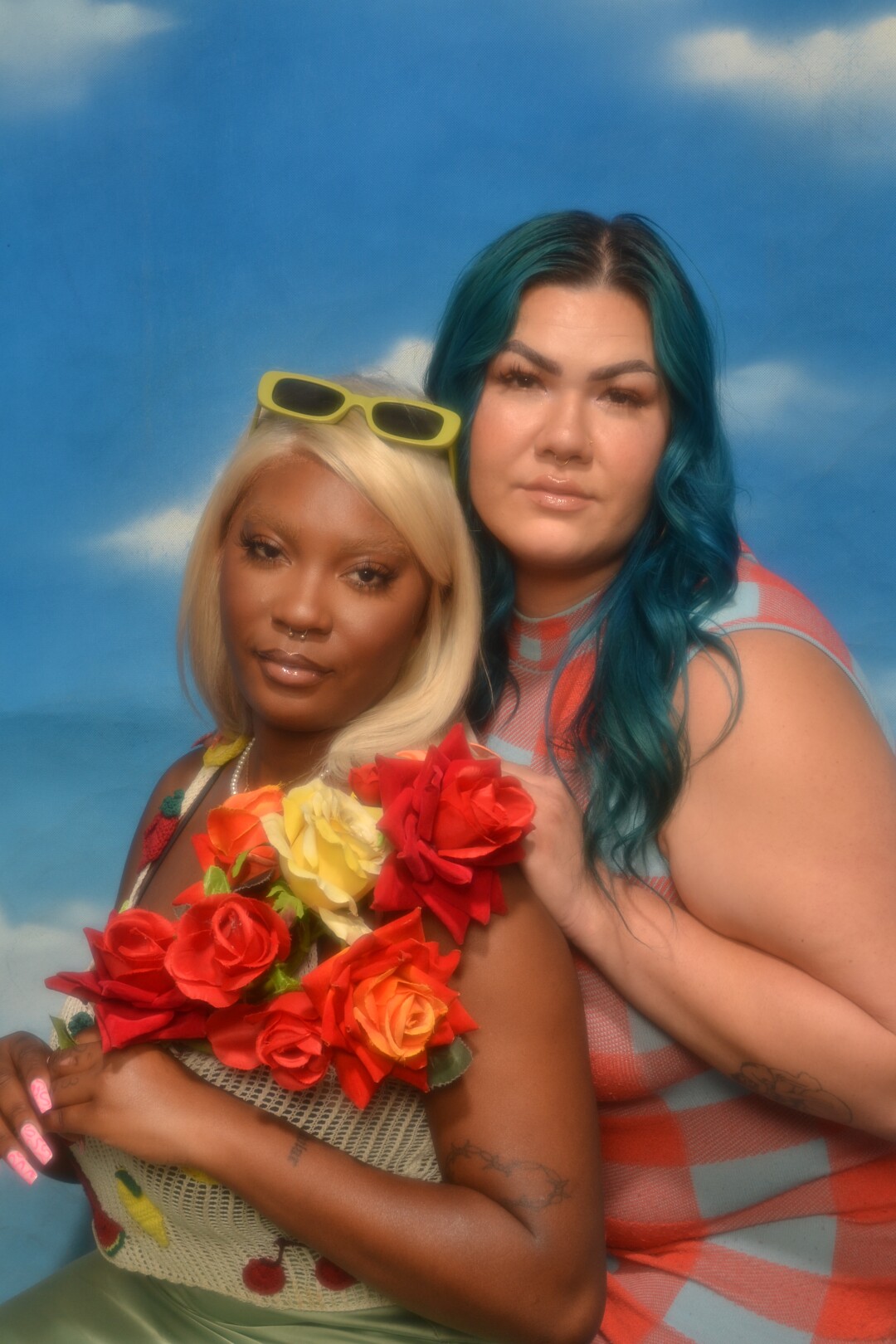
Randijah Simmons, left, and Sisi Hood are co-founders of The Babe Cave L.A., a creative studio.
(Tom Tuong of Tom’s One Hour Photo / for The Times)
What do you want people to know about your L.A. My L.A. has been very welcoming. I’ve been able to find my tribe, my community. I love how community-based L.A. has been. I think that’s the key. — Sisi Hood
What does your L.A. of the future look like? Because I’m a transplant, when you are a transplant to insert yourself into the communities that you’re taking up, and putting in the work and getting to know the natives. That will have a positive impact on L.A. in general and your experience in L.A. — Sisi Hood
What do you want people to know about your L.A.? It’s super diverse and creative, and also very multicultural, which most people who just move here wouldn’t see, because they don’t go to certain areas, but I grew up witnessing Black culture and Mexican culture. — Randijah Simmons
What does your L.A. of the future look like: Less gentrification, more creative spotlight on the natives who are already here doing the same thing people come here to do. It looks like housing for the homeless, because it’s just getting crazy. — Randijah Simmons
rafa esparza, multidisciplinary artist; and his brother, Fernando Esparza
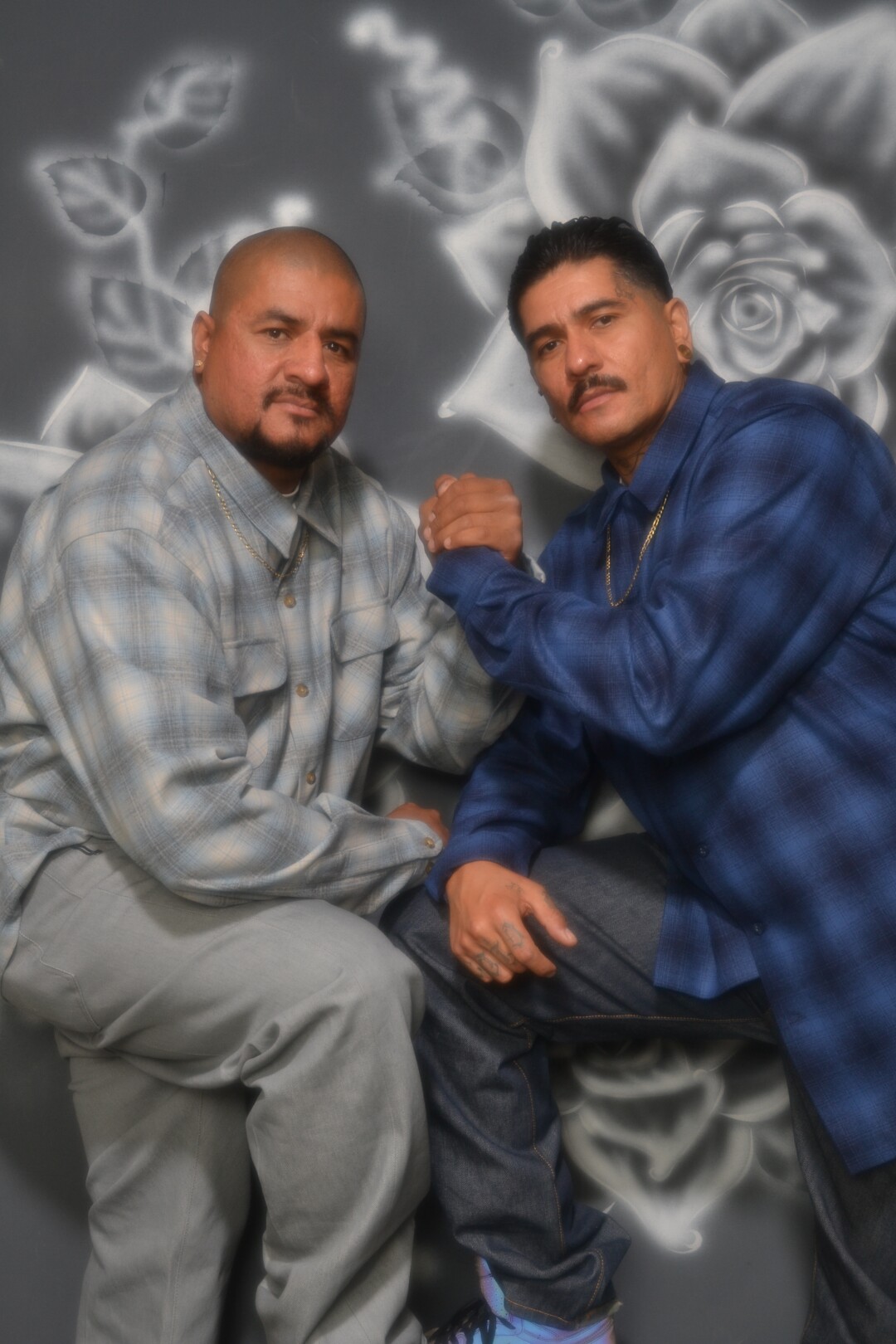
Artist rafa esparza, right, poses with his brother, Fernando Esparza. For rafa, L.A. sounds like “motor engines rumbling through two major intersecting freeways, helicopters soaring not so far off the ground and distant murmurs in all languages.”
(Tom Tuong of Tom’s One Hour Photo / For The Times )
What do you want people to know about your L.A.? The closest thing to one of my favorite places in Los Angeles would be a view from a high place, preferably a mountain or hilltop. On a clear day, you can see as far out as the ocean. A particular view from just a mile away from downtown gives you a 360-view of the city and is one of the richest culminations of sounds that include motor engines rumbling through two major intersecting freeways, helicopters soaring not so far off the ground and distant murmurs in all languages — all and everything whirling in a soundscape of bright, dusty, hot, L.A. sunlight. — rafa esparza
What does your L.A. of the future look like? The future of a Los Angeles I want to see, that I want to live in, is divested in a culture of incarceration in turn for education and has access to food, shelter and wellness for ALL Los Angeleans. — rafa esparza
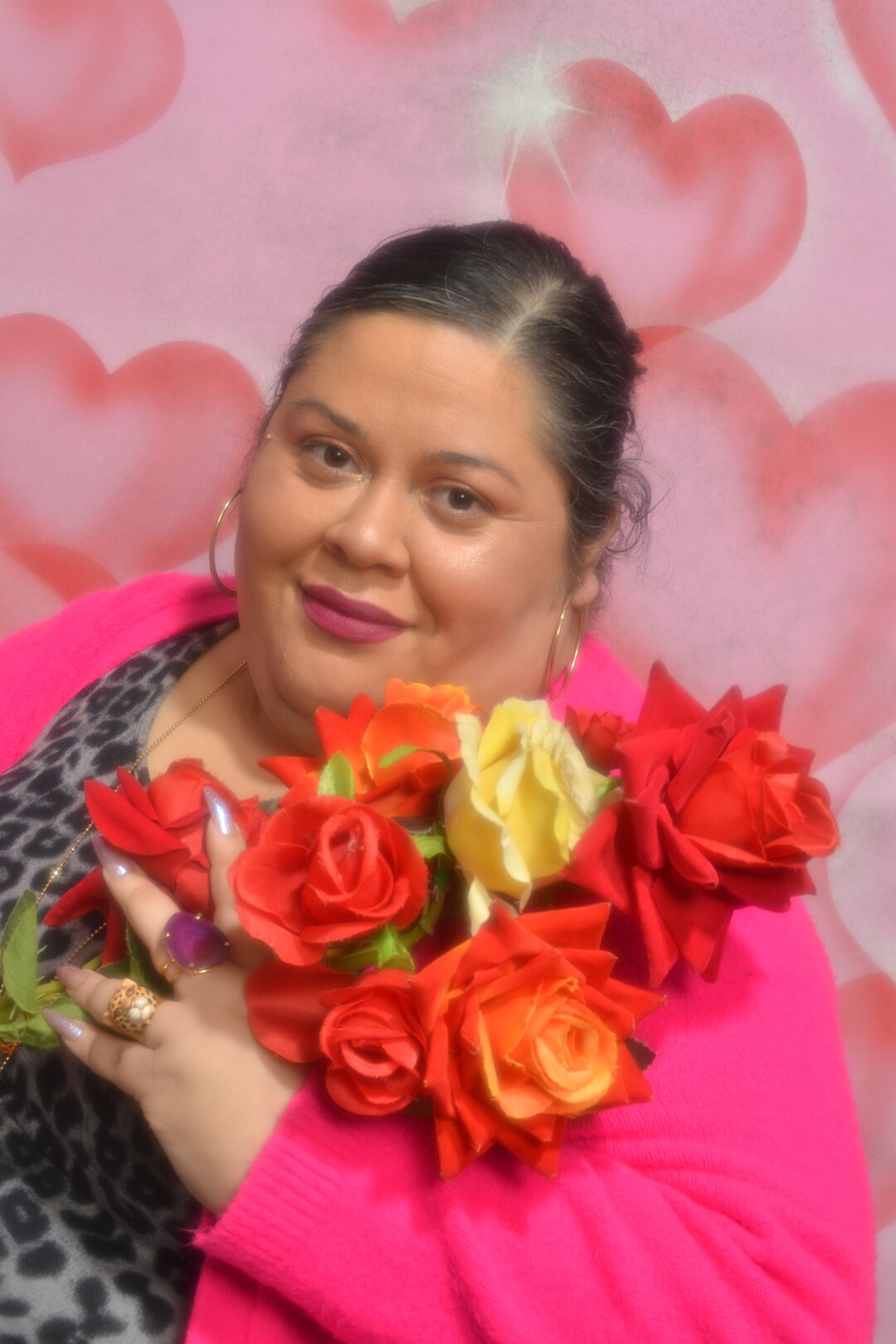
Yesika Salgado is an L.A. native, poet and the author of “Corazon,” “Tesoro,” “Hermosa” and the forthcoming “Mentirosa.””My L.A. of the future is an L.A. that holds itself accountable,” she says.
(Tom Tuong of Tom’s One Hour Photo / For The Times)
What do you want people to know about your L.A.? I think those of us who have grown up in L.A. are aware of the fact that there’s that fake layer over our city. So we are like, extra authentic, of course, because we know what it looks like to not be. My L.A. is the ladies who wake up to take the bus at 6 o’clock in the morning. And the gardeners who travel west to go work every day. It’s the community you make on buses and trains. And it’s Placita Olvera on a Saturday afternoon when all the elderly folks are dancing. The city that I know is a very resilient, very generous city.
What does your L.A. of the future look like? My ideal L.A. would be handed over to the POCs, L.A. kids controlling the narrative of this city. But on an actual civic level, something happening about this houseless crisis we’re having. To see the people in charge of taking care of us take care of our most marginialized. To see a defunded police department. (I grew up in the Rampart Division, so my relationship with the LAPD is an interesting one.) My L.A. of the future is an L.A. that holds itself accountable. I think as the people of this city, we do that. But it would be nice to see it on a government level.
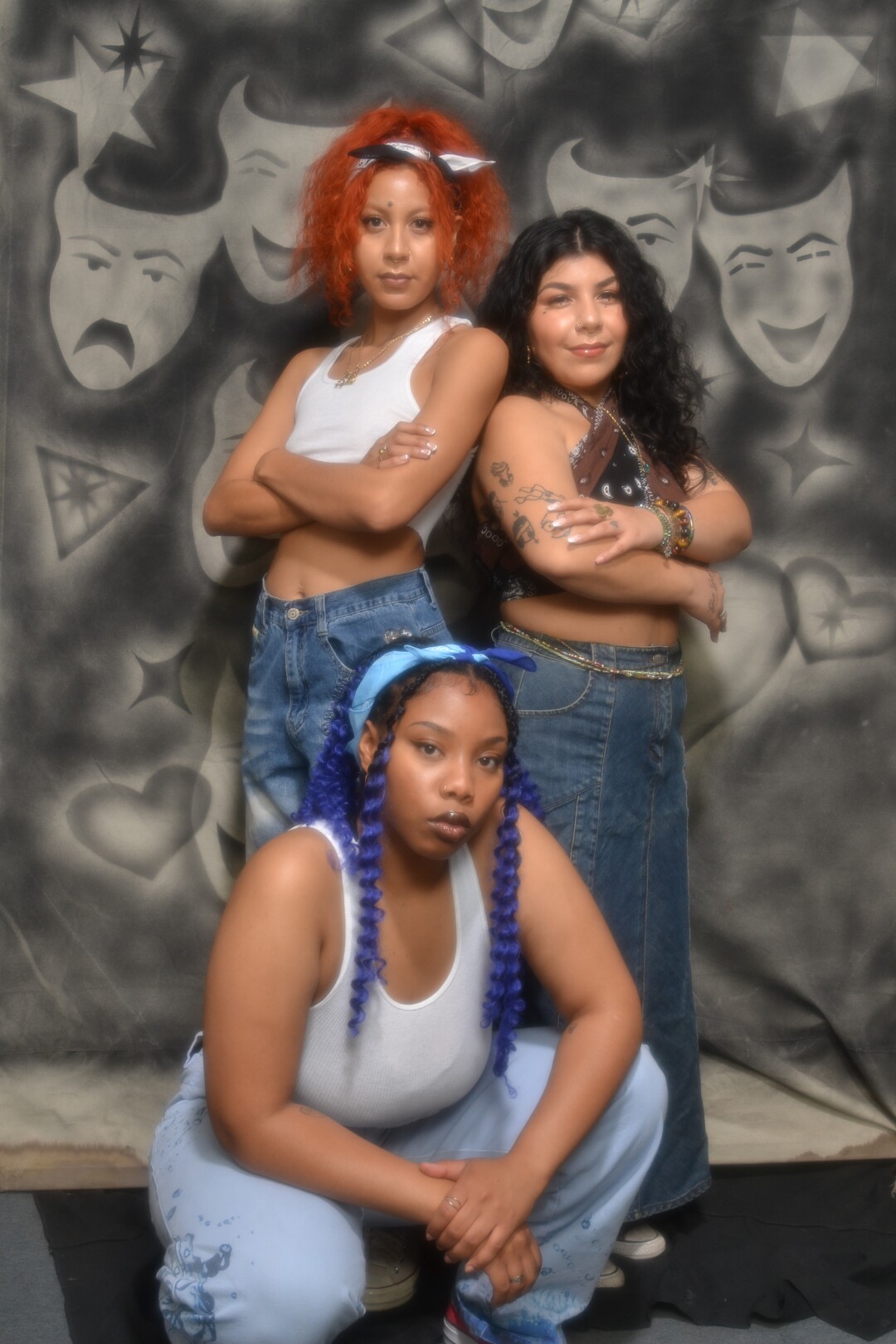
Star Angel (right) is the creator of “Sincerely GhettoBird,” as well as an accessory designer and creative director. She poses with her friends and collaborators, Eyenzsi Reneaux (middle), a creative director and photographer, and Graciela Gutierrez (left), an artist.
(Tom Tuong of Tom’s One Hour Photo / For The Times)
What do you want people to know about your L.A.? It’s not the one on the movies. That’s not L.A. If you want to come to see L.A., you have to come to the Black and brown communities. That’s L.A. to me: Black and brown people in all caps, and just our joy and success. — Star Angel
What does your L.A. of the future look like? Black and brown people — that’s what L.A. looks like in the past, present and future. But also giving us our flowers, that’s what the future looks like. I definitely want justice and change. — Star Angel
What do you want people to know about your L.A.? Being from L.A. is a blessing. If you want to know what L.A. is like, you find someone from L.A. to show you — not to take you to just the hot spots of L.A. This s— is history. Black and brown folks, Asian folks, we make L.A. what it is. — Eyenzsi Reneaux
What does your L.A. of the future look like? I see the next generation of business owners starting to rise up — a lot of them are Black and brown folks. — Eyenzsi Reneaux
What do you want people to know about your L.A.? A lot of people say L.A. is fake, but I think it’s because they meet people who aren’t from L.A. The actual L.A. is very real, is very conscious, is very rooted in identity and resistance. — Graciela Gutierrez
What does your L.A. of the future look like? The future of L.A. is not trying to get into industries and actually creating our own industries. We know what we’re worth now. And mutual aid, that’s something in L.A. that’s very special. — Graciela Gutierrez
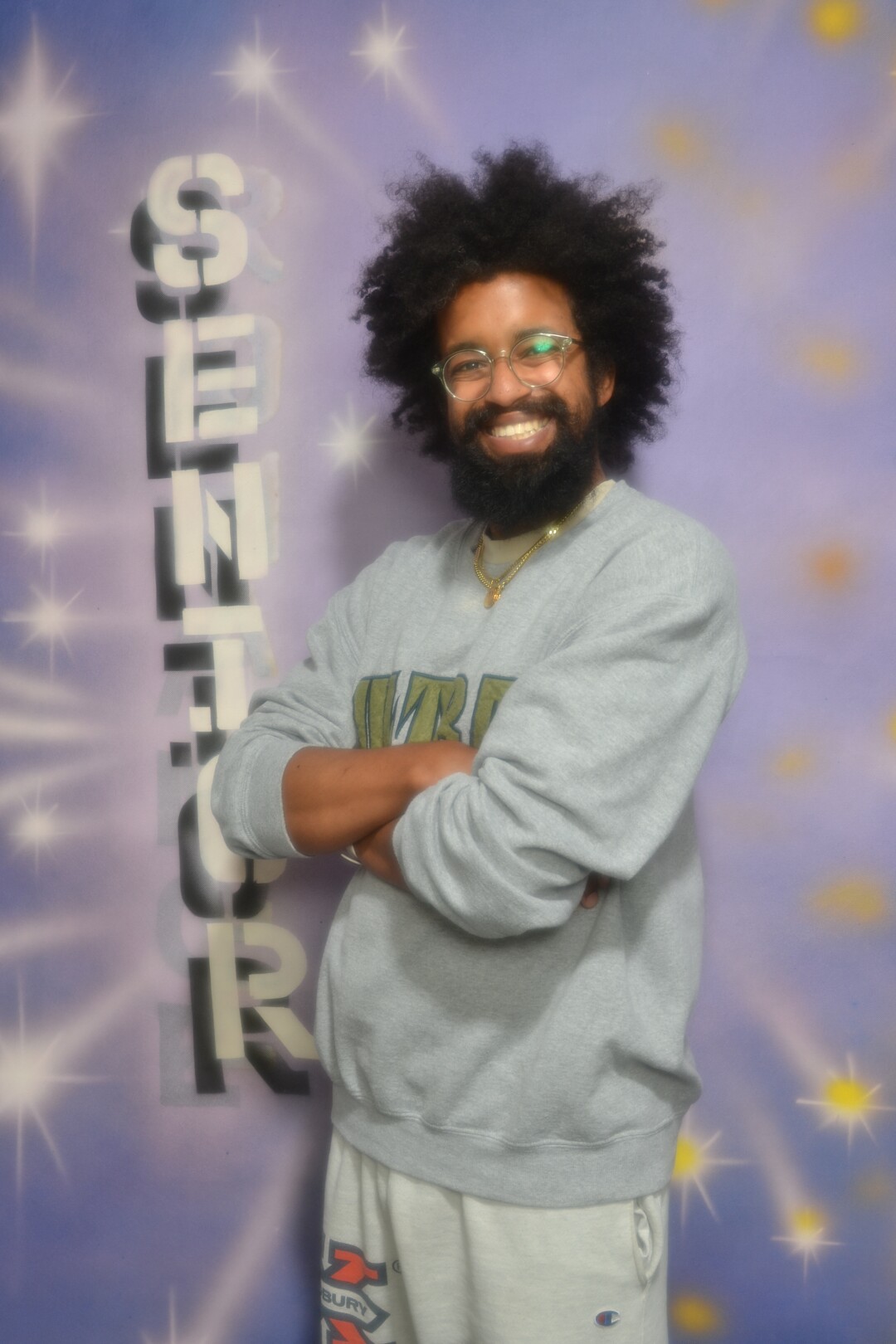
For the writer Rembert Browne, L.A. is all about “small interactions, one-on-ones.”
(Tom Tuong of Tom’s One Hour Photo / For The Times)
What do you want people to know about your L.A.? My L.A., predominantly during COVID, has been more about L.A.’s natural beauty and appeal. It’s not just Hollywood. It’s not just aspiring screenwriters taking meetings. That’s part of L.A., but this is also a real city. The best part about being here is I would like to live better, live healthier, all that.
What does your L.A. of the future look like? I’m in a place where I’m very focused on small interactions, one-on-ones. There are people who have been here for longer than me. I’d like to go to them more. I’d like to not just go to the same places. The great part about being in Mid-City is you can go to the Eastside and it doesn’t feel like a crazy thing. You can go to the beach. We can go to our friends that live in Inglewood. We can go to Hollywood. There’s a certain level of traversing L.A. that I’m excited to do where there’s people on the other side.
More from issue 2 of Image
Stay connected with us on social media platform for instant update click here to join our Twitter, & Facebook
We are now on Telegram. Click here to join our channel (@TechiUpdate) and stay updated with the latest Technology headlines.
For all the latest LifeStyle News Click Here
For the latest news and updates, follow us on Google News.

